The way we vote, not just how much money moves through political campaigns, also affects how well a government represents its ordinary voters.
Most Americans are all too aware of the problem of big money in politics, but they may not recognize the sibling scourge of slanted voting systems. That is, the way we vote, not just how much money moves through political campaigns, also affects how well a government represents its ordinary voters.
Cities, counties, states, and provinces in both the American and the Canadian parts of Cascadia could improve their representative democracies––-i.e., give more voters a bigger say in choosing candidates to represent them—by simply updating their voting systems. And in southern Cascadia, Benton County, Oregon, is poised to do just that.
Benton County’s big ranked-choice chance
Benton County, Oregon, surrounds the small city of Corvallis and is home to Oregon State University. This November, voters there will have the chance to vote for Measure 2-100, authorizing ranked-choice voting in future general elections for their three county commissioners and county sheriff. It’s an opportunity to show the rest of Cascadia how a voting system called ranked-choice would not only make more votes count, but would give voters the chance to express their true preferences, elect candidates that the most voters like the most, reduce negative campaigning, and engage more voters in the civic process.
The time is ripe to rethink voting systems, with US voters reeling from the results of this year’s unusual presidential primaries, in which just 14 percent of eligible adults selected the two nominees. The state of Maine is considering ranked-choice voting this November, and Oregon is particularly fertile ground for voting reform because the state constitution specifically authorizes ranked-choice voting.
Back in Benton, the measure sports an impressive list of endorsers, including four state parties, two local party chapters, and a long list of elected officials. If all goes well there, it may build momentum for changes to voting in other Oregon cities and counties, and eventually at the state level. So what’s so great about ranked-choice voting?
1. Voters can vote for candidates they truly support.
Many American voters are dissatisfied with the two major party candidates for president. In November, some plan to “throw away” their votes by casting “protest votes” for a minor-party candidate they know has no chance of winning. But many know that, in a plurality system, voting for the candidate they truly support can nudge election victory to the candidate they like least. To avoid this “spoiler effect,” they will hold their noses and vote for the “lesser of two evils.”
If Benton County implements ranked-choice voting, voters there will not have to face such unpalatable options in future county elections. Voters will rank candidates for county commissioner and sheriff in their order of preference, knowing that the candidate with the most overall support will win. (New to the concept? Here’s a great 4-minute video explaining how ranked-choice voting avoids the spoiler effect and lets voters pick the candidates they actually like best.)
To picture how ranked-choice voting can change elections, imagine Benton County’s ranked-choice voting proposal had been in place this year for federal elections. Bernie Sanders might not have competed in the Democratic party primary, but instead might have run in the general election as a Democratic Socialist. A left-leaning voter might have filled out a hypothetical presidential ranked-choice ballot like this:
- Bernie Sanders
- Jill Stein
- Hillary Clinton
Meanwhile, Ted Cruz might have chosen to run for president under the Tea Party banner, and a right-leaning voter might have ranked his choices like this:
- Ted Cruz
- Gary Johnson
- Donald Trump
A moderate might have eschewed what he sees as the radical options and chosen to rank:
- Gary Johnson
- Hillary Clinton
The president would be the candidate with the most support from the most people—the one whom many people across the country liked enough to rank at all. Voters would not be forced to strategically check the box for one of two candidates they dislike, nor would they have to let their support for a minor party candidate go unexpressed. Voters would get to say what they mean, everyone would have a clearer picture of what voters want, and the candidate with broadest support would win.
2. Winners have more overall support.
In the “choose-only-one” plurality elections we use throughout Cascadia, we vote for one candidate, and that person either wins or doesn’t win. Very often, candidates win with only a plurality of support—not a majority of votes, but more votes than anyone else. In other words, the majority of voters voted for someone else.
Ranked-choice voting means that voters don’t just vote for one top choice but get to rank their top three choices. If your top candidate doesn’t win, your second choice is still counted. This requires winners to have support from the majority of voters. Fringe or extremist candidates with a plurality of support but opposition from a majority of voters can’t slide into office; only candidates who appeal to a majority of voters can win. The candidates who win are the candidates who are most respected and best liked overall in the electorate, and people are represented by elected officials that more people can agree on.
3. Candidates reach out to more voters.
In the current system, a candidate can fire up his or her base, ignore or even insult the majority of voters, and still win. That strategy won’t work with ranked-choice voting.
Minneapolis Mayor Betsy Hodges explains that to win her ranked-choice race, she had to go everywhere and talk to everyone. That made her campaign strategy more inclusive, and the city’s voters elected a candidate whose message resonated with a majority of voters, not just a plurality.
San Francisco mayoral candidate David Chiu explains that in a “choose-only-one” race, he would ignore voters who support another candidate. With ranked-choice voting, though, he engages all voters to try to win majority support, whether he is a voter’s first-, second-, or third-choice ranking.
4. Minority groups have more voice.
Because candidates must broaden their appeal to win under ranked-choice voting, they would have to play beyond the older, whiter, more male voters who dominate low-turnout party primaries. To win in November, candidates would have to reach out to minority groups such as people of color and LGBTQ communities, giving those groups more power and engagement in the election process than they have under “choose-only-one” elections. Indeed, San Francisco’s record with ranked-choice voting suggests that more people of color might win office with a ranked-choice ballot.
5. Campaigns are more positive.
Negative campaigns plague our winner-take-all system. But ranked-choice voting rewards positive, inclusive, and informative campaigns.
Ranked-choice voting encourages candidates to run a positive campaign that appeals to more voters.
A two-year study of 22 American cities verified that voters in ranked-choice cities perceive less campaign negativity than voters in plurality cities. Betsy Hodges explains: it doesn’t pay to “talk smack” about your opponents if you are simultaneously trying to woo their supporters to award you their second-choice ranking. Candidate David Chiu describes how ranked-choice voting encourages candidates to run a positive campaign that appeals to more voters.
6. Third-party candidates have a real shot at winning office.
Independents—people who don’t identify with either of the two major parties—are the biggest and fastest-growing group of US voters. The trend is even more stark among younger Americans: nearly half of millennials consider themselves independent.
Two parties can’t adequately represent the diversity of Americans, but the plurality voting systems flouts voter preference and the ideals of representative democracy by shoe-horning voters into two major parties, under threat of spoiling the election. (Think of voters who wanted to vote for Ross Perot but didn’t want to spoil the election for George H. W. Bush, or voters who wanted to vote for Ralph Nader but didn’t want to spoil the election for Al Gore.)
With ranked-choice voting, Benton County voters will be able to rank a candidate from, say, the Pacific Green Party, the Independent Party of Oregon, or the Libertarian Party without fear. If one of those candidates wins support from a majority of county voters, he or she could win a seat on the county commission.
7. The idea could spread.
Change usually doesn’t happen all at once. A few innovative spirits identify a better way, take the leap to show the improvement, and others follow suit with these new best practices. Benton County is joining other cities around the country in reforming voting systems, and if it works there, other Cascadian cities and counties may go next.
A few more things to know about Benton County’s ranked-choice voting measure:
More people might vote.
The data on ranked-choice voting and voter turnout is mixed. But Oregon State University, located in Benton County, doubled student voter turnout when it started using ranked-choice voting in student body elections in 2014, so Benton County might also see a boost.
The party primaries will remain the same.
Other cities using ranked-choice voting eliminate the primaries, letting all candidates compete in the ranked-choice general election (for example, San Francisco, California; Minneapolis, Minnesota; and Portland, Maine). Benton County’s measure would keep the party primaries intact, only implementing ranked-choice voting in the general election.
This approach has political and practical benefits. The two large political parties often oppose ranked-choice voting because it replaces party primaries, weakening the major parties’ roles in elections. By not touching the party primaries, Benton won support from the Benton Democratic Party and does not appear to have incurred opposition from the Republican Party.
As a practical matter, the primaries will ensure Benton ballots don’t get too long and overwhelming for voters. On the November ballot, voters will continue to see the Democratic and Republican candidates who won their party primaries, plus likely a few minor party candidates. Oregon recognizes three major parties and six minor parties that can nominate one candidate each to the general election ballot by submitting a nomination form, like this one for Pacific Green Party candidate Timothy Dehne, running for Benton county commissioner in November.
Benton will seek implementation funds from the state.
Even if the measure wins at the ballot, it has to jump another hurdle: raising up to $200,000 in funds from the state or other sources for implementation and voter education.
Benton already has ranked-choice capable voting machines, so it won’t need to pay to replace its hardware. However, the machines will need a software update to count ranked-choice ballots, and voters will need information on how the new ballots work.
State representative Dan Rayfield is a co-petitioner for the Benton initiative, so he may convince fellow legislators to allocate some or all of the money to try ranked-choice voting in Oregon. Charitable sources interested in better voting methods might supplement whatever the state gives.
Conclusion
This American presidential cycle put the perils of plurality voting on display. Voters in Oregon and across Cascadia may be ready to try a different voting method that lets them express their true preferences and elect thoughtful, positive leaders with majority support. Benton County is well-positioned to lead the way.

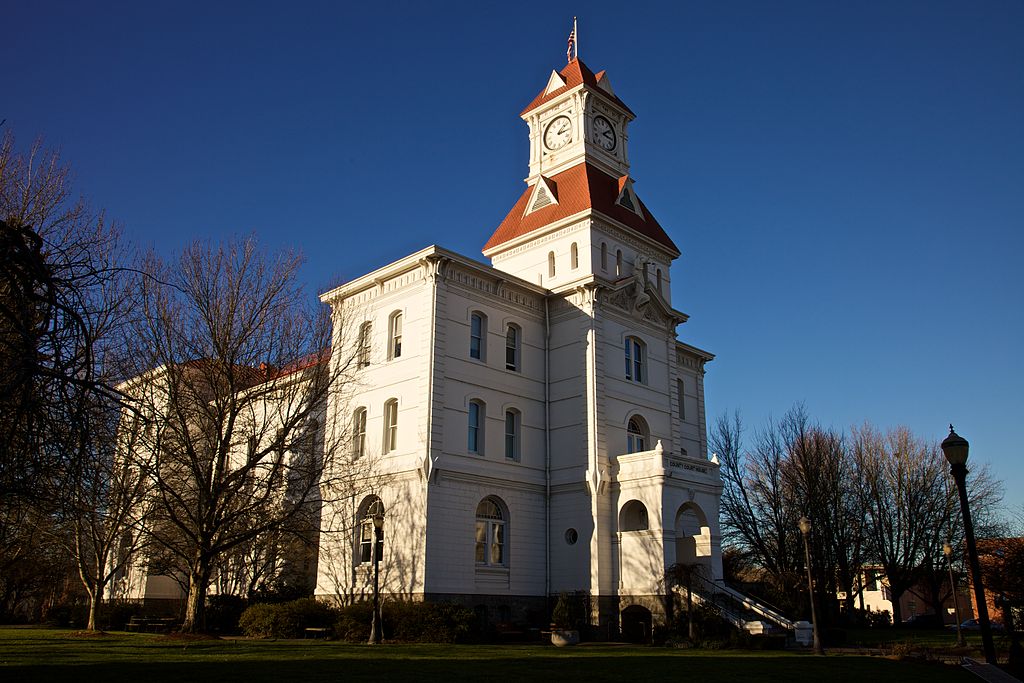
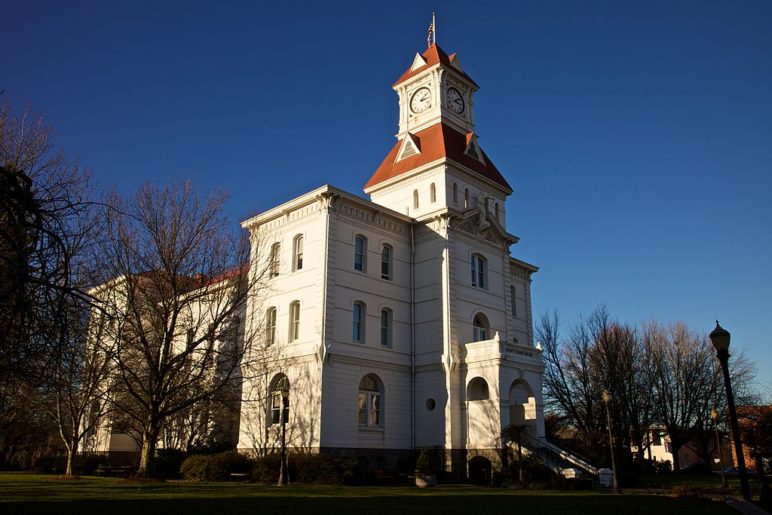


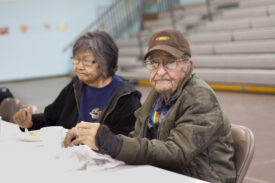
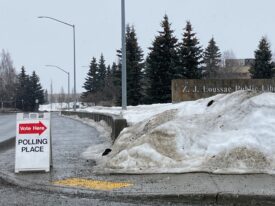
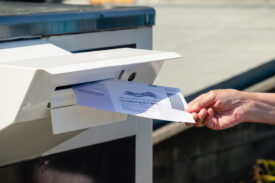

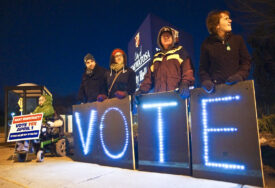

John Gear
And your #5 has significant effects on reducing campaign costs — negative campaigns are perfect for runaway spending fights, which is why we end up with the “money primary” before we even have the real primary. If you aren’t seen as someone who can raise the big cash for the inevitable mud bath, you aren’t a plausible candidate and are winnowed out immediately. Thus, even where negative campaigning doesn’t occur, it has already had a pernicious effect on who can even be considered.
In other words, there are lots of reinforcing direct and indirect benefits to ranked choice voting.
Marian Beddill
I and our community-action group for election integrity, started out as trying Ranked-Choice.
But as we got deeper into the workings of that system, too many serious problems came to light:
It may be OK for local issues/candidates. But for multi-county votes, the consolidating of the multi-choice systems is at high risk of either confusion, or hacking-corruption!
A major snag is that voting machines or internet voting CANNOT be trusted, since the software can be corrupted and there is no HaCoPaBa as a trusted record of the intent of the voter.
Do NOT use Ranked-Choice Voting!
Come visit my Whatcom County, WA, and see how our wonderful, easy, and trusted integrity works.
Alan Zundel
Oregon doesn’t use machines for voting, just for tabulation. We vote with mail-in paper ballots, then the ballots are scanned and tabulated with computerized equipment. A multi-county vote should not be a problem, as each county can download its results to an Excel spreadsheet. Then they can be easily combined, even with a hand calculator. Exactly what kind of problem did you run in to?
Robin Quirke
Although rank-choices voting has gained the most political traction, there are two other alternative voting systems, namely score voting and approval voting that are worth considering. Below is a software engineer’s simulation of how ranked-choice voting (IRV), approval voting, plurality voting, and score voting perform with three or four candidates.
Ka-Ping Yee’s Voting Simulation: http://zesty.ca/voting/sim/
Alan Zundel
There are reasons why ranked choice voting has gained traction and the others have not, and it is not that people are unaware of the latter. Simulations of voter behavior, and models based on voting theory in general, are based on faulty assumptions. One is that voters’ preferences can be mapped two-dimensionally; this is not realistic. Parties such as the Greens and Libertarians are not simply farther to the ends on a two-dimensional scale, they have positions that require a cross-dimensional mapping.
More importantly, voting theory does not take into account how voting systems affect campaigns and parties. It is campaigns and parties that shape voters’ preferences; voters’ preferences are not a given but are developed by the kind of campaigns they are exposed to and the parties that they regard as realistic to consider. Empirical research would be much more valuable than borrowing economic theory and performing computer simulations, but we do not have much empirical research on all the voting systems.
Personally, I have looked into score and approval voting and find them lacking. They create a problem for voters deciding what to do with candidate/parties they feel so-so about when they also strongly prefer another candidate and strongly do not prefer yet another. What to do with the middle candidate? Approve them (or score them higher) and you potentially help them defeat your truly preferred candidate. Disapprove them (or score them lower) and you potentially fail to help them defeat the candidate you truly do not like. Ranking systems allow them to clarify their preferences while scoring systems make it problematic.
Marian Beddill
Alan and everybody;
Washington State doesn’t use machines for voting, just for tabulation. We vote with mail-in (or drop-box) paper ballots, then the ballots are scanned and tabulated with computerized equipment.
(Oh! You just said that about Oregon.)
A multi-county vote might not be a problem, as each county can download its results to an Excel spreadsheet.
Then they can be easily combined (correctly or sneakily mis-tallied), even with a hand calculator or hacked software.
We’ve had no problems, since we’ve never run RCV.
Our local history – Whatcom County:—
In 2002, many interested citizens attended a book-reading (at our famousn store Village Books) by a well-known writer. He presented RCV (called it IRV) and the audience was fascinated! Somebody said: “Lets start a study-group!”
Since I am a geek, and had a clipboard with a pad of ruled paper, we made a sign-up sheet and I immediately started a Yahoo-Group listserve. Called it “WFV” (Whatcom Fair Voting) and in no time at all we had dozens of active subscribers, and set a non-partisan policy for the group.
This group is STILL operating, and has been a notable multi-party player in our county election system.
But as we worked on RCV, what we saw was that moving datasets of RCV votes OUT OF the County, was a HIGH RISK of corruption – either accidental of by somebody’s intent.
A large element of our WFV work has always been system integrity! A big piece of that is always two people working as a team, in every activity – sometimes three. One is “doing” – the other is watching (“watch-dogging”.)
Ballots and data are NEVER handled alone! And there are numerous cross-checks and back-checks in the system. We hand-count ballot batches (using the original paper ballots marked by the voters), against the OpScan tallies, and we routinely find TALLY ERRORS which must be rectified before proceeding. Doing that with ORIGINAL ballots in one place, and adjusted tallies away in another County, will be VERY difficult.
Let me stop here for now, and insist that any operation with ballots or tallies MUST have a HIGH DEGREE of integrity quality control – which will have to be a NO=FAIL system. And it will be expensive.
Clay Shentrup
> There are reasons why ranked choice voting has gained traction and the others have not, and it is not that people are unaware of the latter.
Actually, I think lack of awareness actually *is* a major factor here. The modern findings supporting Score Voting and Approval Voting, mainly Warren Smith’s Bayesian Regret figures, were unknown for the past century since IRV got off the ground. As “Gaming the Vote” highlights, pretty much everything we thought we knew turned out to be wrong.
In addition, voting theory is highly *counter-intuitive*. You see a lot of people naively assuming that we must have “majority winners”, while lacking sufficient expertise to know that there’s really no such thing.
> Simulations of voter behavior, and models based on voting theory in general, are based on faulty assumptions. One is that voters’ preferences can be mapped two-dimensionally; this is not realistic.
It is absolutely untrue that Warren’s simulations require two-dimensional utility generators. He used various utility generators, including random utilities. It turns out that the more issues dimensions you use, the more it just looks like random.
It’s a bit frustrating to hear someone argue that the simulations are faulty, while simultaneously demonstrating limited/flawed understanding of those simulations. The simulations may be “imperfect”, but they are not “faulty”.
> voting theory does not take into account how voting systems affect campaigns and parties
Well, first, that’s not exactly correct. We have strong theoretical reasons to expect cardinal voting methods to increase the number and diversity of candidates, increase turnout, and decrease the influence of money in elections. And there’s a great deal of empirical evidence from large contentious organizational elections, exit polls, etc. to back up these theories.
And honestly, it’s a bit strange to hear this argument given that your defense of STAR Voting is even _more_ theoretical, given STAR has had vastly less use and empirical data associated with it.
> Ranking systems allow them to clarify their preferences while scoring systems make it problematic.
This is simply false, as you should know if you’ve read “Gaming the Vote”, or taken even a cursory dive into the subject matter. With virtually all ranked systems, you don’t want to rank your favorite candidate in first place unless she’s a frontrunner. So if you really prefer Green 1st, Dem 2nd, you want to insincerely rank Dem in 1st place.
Whereas with Score Voting, if you think Green=5, Dem=3, and you want to be strategic, you can just give the Dem a 5 as well, with no pressure whatsoever to give anything less than your full support to the Green.
> I have looked into score and approval voting and find them lacking
But your comments show that you made some substantial errors in your analysis, and seemingly did not remember huge swaths of what you read.
Alan Zundel
By “them” in that last sentence I mean the voters.